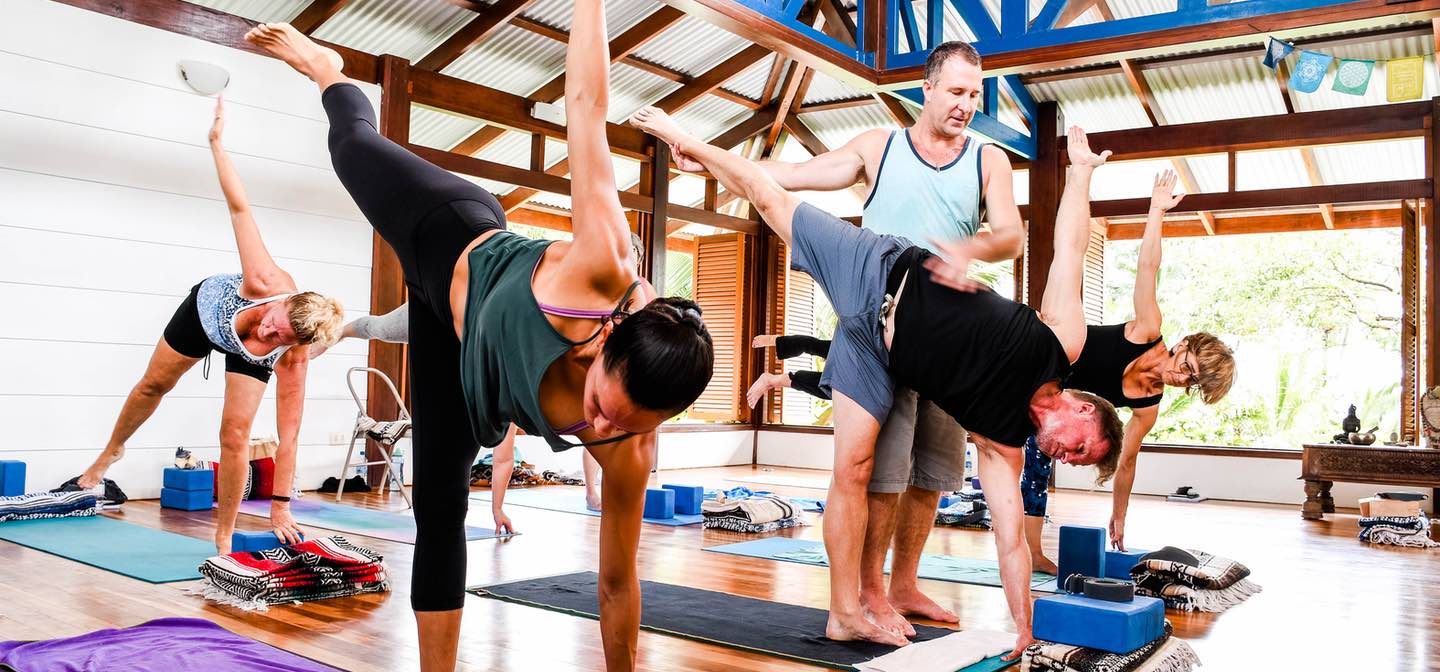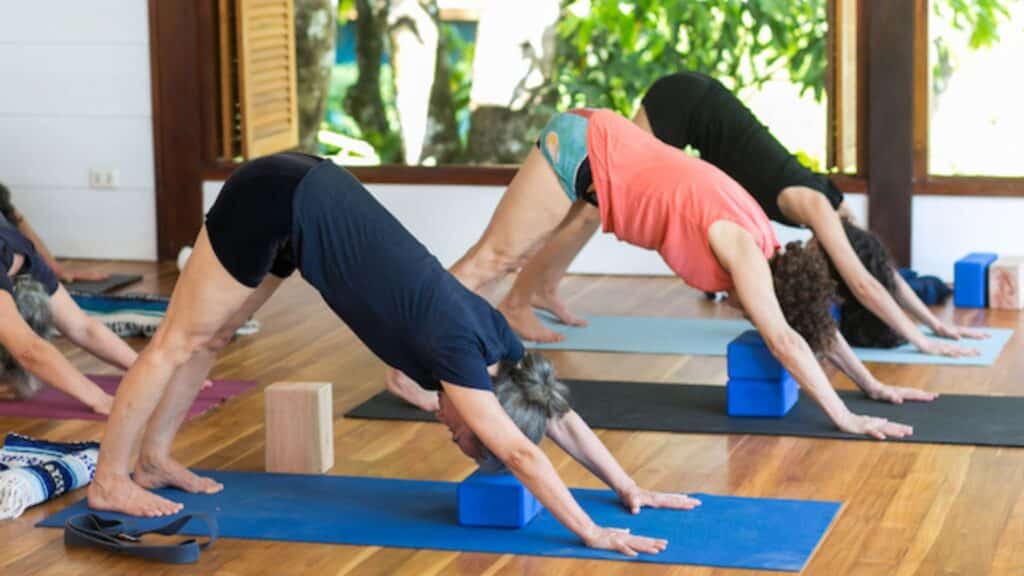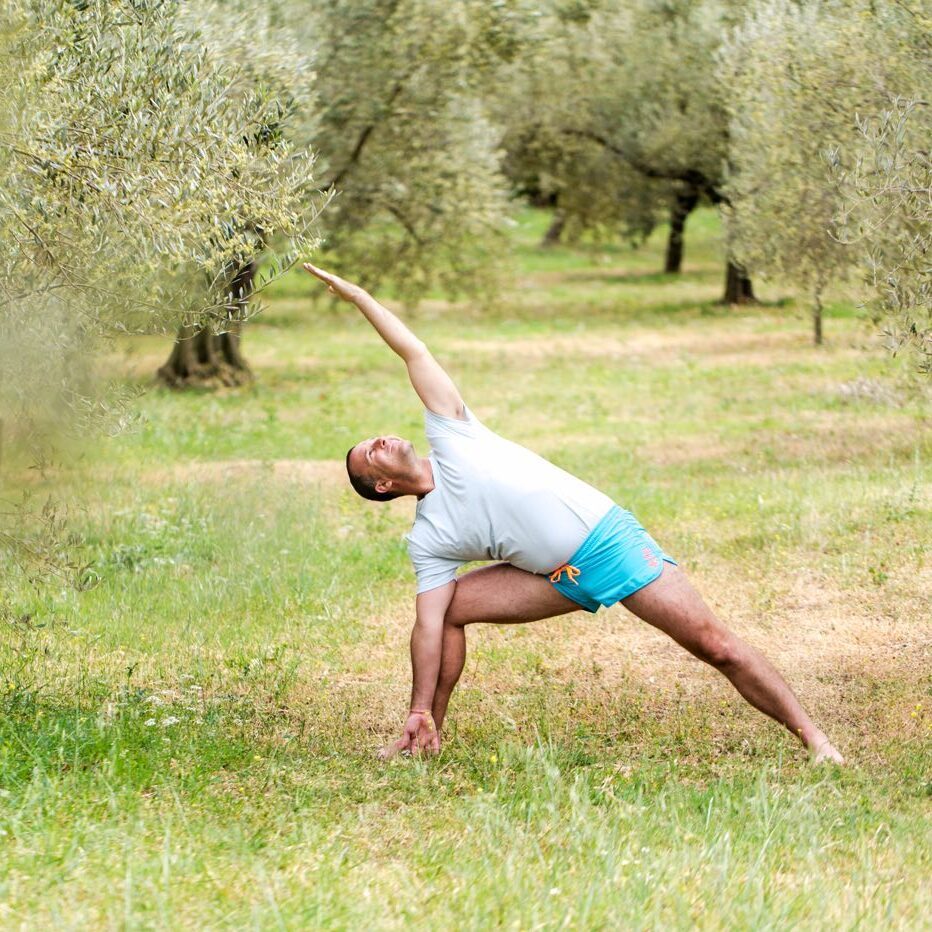It may sound obvious, but when you’re just starting out in yoga, the difference between a good and a bad teacher can be monumental. Having somebody teach you the correct form for base yoga poses is crucial. At this early stage, without the right instruction, bad habits and incorrect form could be the basis of your yoga practice which could lead to future injury.
Blue Osa Yoga Retreat and Spa is a hub for hundreds of yogis every year. Here we host 200 and 300 hour yoga teacher trainings as well as yoga retreats led by fantastic and reputable yoga teachers from all over the world. We also welcome travelers and guests who are looking for an exotic tropical vacation with an emphasis on yoga.
Yoga is the foundation of who we are and what we offer at Blue Osa so it is our number one priority to help cultivate great yoga teachers as well as hire them to properly teach our beloved guests. But what makes a great yoga teacher? Well, we believe there are 5 main traits that a great yoga teacher possesses. Read below to find out:
5 Traits of a Great Yoga Teacher
1. Acknowledge the Class level
Any teacher worth their salt will recognize any new faces turning up to a regular class or ask the people they’re teaching what their yoga background is. A class has to be tailored to fit everyone’s capabilities. It stands to reason that someone with no experience with yoga walking through a door marked “Advanced Yoga” should be politely turned away, but in any other circumstance, it is important for yoga teachers to welcome in students of all levels by letting your class reflect the experience in the room, setting a nice balance without leaving a newbie struggling in an attempt to dangerously get into advanced postures.
2. Intervene
Either a subtle pull on the hips in down dog, or a whisper in the ear to adjust your footing, these interventions go a long way in helping your students improve, and more importantly in preventing strain and injury. Some people may prefer being directed rather than touched, so it’s important to ask permission to touch them in order to adjust them. However you choose to intervene and assist, it’s important that you do, don’t leave your students to discover their own mistakes later down the line.
3. Read The Room
This doesn’t just apply when an instructor finds a beginner in their midst, it applies at all times. There’s nothing worse than when an instructor misreads the energy of a room and sends the class off into a sweat-busting power flow when they have a room full of exhausted students whose bodies are calling for a restorative practice. It’s important for yoga teachers to be fluid with their classes.
4. Find the right voice
Beginner yogis need descriptive prompts to move into poses properly. Some more advanced yogis may be able to flow seamlessly with their eyes firmly shut. But most yogis, no matter what their level, need and want clear and descriptive instruction. They need detailed verbal prompts of where their body should be and where they should (or shouldn’t) feel a stretch. There is literally nothing worse than being in a class and holding the wrong pose or looking around the room to figure out what you should be doing. Students follow their teacher’s voice, it guides them through the class. Take the responsibility to lead!
5. Plan B
Yoga is not simply about flexibility. We all have different bodies with different limits depending on variables like age, weight and gender. For that reason, it is integral, especially for any beginners in your class, that you provide your students with options when moving their bodies into and out of poses. Even if it’s something as simple as offering the choice to drop their knees to the mat during Chattaranga, or maybe incorporating props such as blocks or blankets to relieve the tension on the muscles. Providing such relief can mean the difference between an enjoyable or not enjoyable yoga class, or even worse, an injury. Allow your students to grow at their own pace, give them a plan B!
Blue Osa’s Yoga Teacher Training
Whether you are considering taking your first yoga teacher training or you are a long-time teacher who is ready to take your career to the next level, we offer something very unique here at Blue Osa.
Yogi Aaron is a Master Teacher of Yoga, an International Retreat Leader, an author, podcaster, sought-after speaker, and the founder of Blue Osa Yoga Retreat in Costa Rica.
After a lifetime of practicing traditional yoga which encourages and glorifies flexibility and stretching, Yogi Aaron arrived at a crossroads. He had developed chronic back pain from the very practice that his entire life revolved around. He had also noticed the same kind of yogic injuries happening or existing in a lot of his students. At that point, he knew there had to be a better way, and that’s when he created Applied Yoga Anatomy + Muscle Activation™ or AYAMA.
Simply put Yogi Aaron has flipped the script on the glorification of stretching, teaching his students the importance of muscle stability and strengthening practices. His revolutionary techniques and teachings have helped hundreds of people live pain-free.
You will receive your AYAMA™ training and certification along with your 200, 300 or 500-hour certificate, an invaluable additional certification you can not get anywhere else.
Wherever you choose to do your yoga teacher training, set the intention to be a great yoga teacher. With great responsibility comes great reward!













